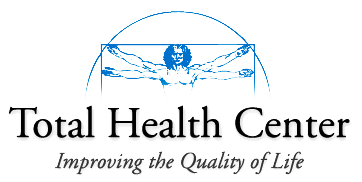Blood Sugar/Blood Glucose
From a medical standpoint, normal blood glucose levels have a broad range of 70 to 105, while functional or optimal blood glucose level ranges are 85 to 99. According to the American Diabetic Association, a blood sugar level reading of 106 to 126 is termed “insulin resistance” or “pre-diabetes,” and anything above a reading of 127 is diabetes.
Granted, those are fasting blood glucose levels and it is important to note that because many times I will see patients who have been tested and I’ll ask them if they’ve fasted before their test and they will tell me, “No.” You need at least a 12-hour fast, which means absolutely no food, no drinking orange juice or coffee or anything! All that you should have is water for 12 hours before your test, so you can get an accurate reading of your blood glucose levels.
Supporting fibromyalgia nutritionally is futile if your blood sugar level is too high or too low.
A reading below 85 would be termed hypoglycemia and a reading above 99 would be termed hyperglycemia. This is called dysglycemia and this is a stepping-stone to diabetes. Diabetes is becoming so prevalent in the United States that authorities are predicting that it may bankrupt the healthcare system.
Hypoglycemia is a condition in which the blood sugar level repeatedly drops too low in response to high carbohydrate foods. Refined sugar is a good example of a high carbohydrate food. Hypoglycemia can also be a result of going too long without eating: and too many Americans are skipping breakfast.
It’s important if your blood sugar is below 85, it’s important that you eat every two to three hours. You should have a breakfast, a snack, lunch, a snack, dinner and a light snack before bedtime. The snack can be vegetables, fruit, nuts, and/or seeds but it SHOULD be something healthy.
Insulin resistance is high blood sugar that hasn’t yet reached the point of diabetes. It’s called “pre-diabetes” and is a result of the cells becoming resistant to insulin, so that no glucose can enter the cell to make energy.
You need glucose in your cells to make energy. It’s a vital, important part of life. Your brain and nervous system need two things to survive: fuel and activation. Fuel is oxygen and glucose. You see glucose travels in the blood stream until it’s turned into triglycerides for fat storage.
This is why it’s important to monitor triglycerides as well as glucose. The process of turning glucose into triglycerides demands an increased amount of energy causing you to feel tired after eating. So when you are eating a high- carbohydrate diet filled with white bread, pasta, and refined sugar, you cannot keep you blood sugar level stable.
If you feel sleepy or you crave sugar after eating, you know you just ate way too many carbohydrates. If you feel sleepy after a low- or no-carbohydrate meal, you are most likely insulin resistant.
It is literally impossible to support hypoglycemia or insulin resistance unless you eat a healthy breakfast with ample high-quality protein. You need to eat protein in the morning, not carbohydrates. You need to eat eggs, you need to eat lean meat such as turkey or chicken sausage. You need to eat protein in order to support your blood sugar levels.
Even if you feel nauseous first thing in the morning upon waking, eating breakfast is critical and eating a breakfast of high protein will most likely relieve your nausea. Finally, if you have hypoglycemia you should NEVER fast. It will make matters much worse!
Don’t suffer another minute! Call our office at 757 363-8571 and schedule a Free consultation with Dr. Scott. Call now, space is limited!
